- Chipola is a comprehensive public college whose mission is to provide accessible, affordable, quality educational opportunities to the residents of Calhoun, Holmes, Jackson, Liberty and Washington counties and to all others who choose to attend. The college creates a student-oriented atmosphere of educational excellence and maintains an intellectual environment which inspires the full development of each individual’s goals, abilities, and interests. Because there is no substitute for quality instruction, the college empowers faculty members to establish and achieve the highest possible standards. The college also promotes a strong working relationship with communities, businesses, state agencies, and other educational institutions.
School Highlights
Chipola College serves 2,397 students (42% of students are full-time).
The college's student:teacher ratio of 13:1 is lower than the state community college average of 20:1.
Minority enrollment is 32% of the student body (majority Black), which is less than the state average of 67%.
Quick Stats (2025)
- Enrollment: 2,397 students
- In-state tuition: $3,120
- Out-state tuition: $8,950
- Student:teacher ratio: 13:1
- Minority enrollment: 32%
- Source: Integrated Postsecondary Education Data System (IPEDS)
Top Rankings
Chipola College ranks among the top 20% of public schools in Florida for:
Category
Attribute
Affordability
School Overview
The teacher population of 188 teachers has stayed relatively flat over five years.
Chipola College
(FL) Community College Avg.
Carnegie Classification
Baccalaureate/Associate's Colleges: Mixed Baccalaureate/Associate's
Not applicable, not in Carnegie universe (not accredited or nondegree-granting)
Institution Level
Four or more years
At least 2 but less than 4 years
Institution Control
Public
Private not-for-profit
Total Faculty
188 staff
139 staff
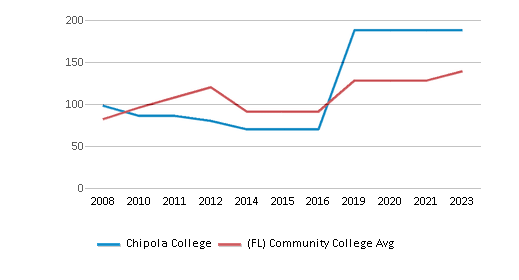
School Calendar
Student Body
The student population of Chipola College has grown by 23% over five years.
The student:teacher ratio of 13:1 has increased from 10:1 over five years.
The Chipola College diversity score of 0.51 is less than the state average of 0.76. The school's diversity has grown by 11% over five years.
Total Enrollment
2,397 students
646 students
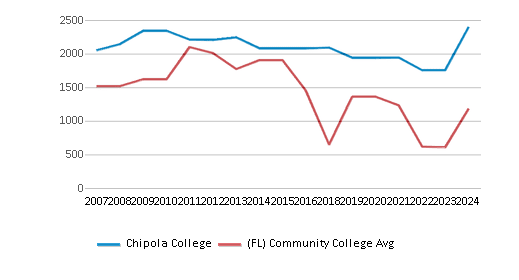
Student : Teacher Ratio
13:1
20:1
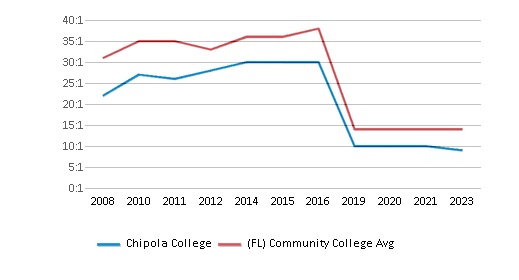
# Full-Time Students
1,016 students
587 students
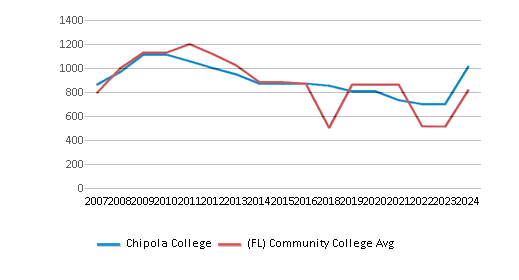
# Part-Time Students
1,381 students
557 students
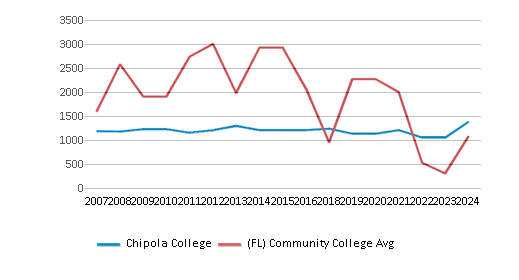
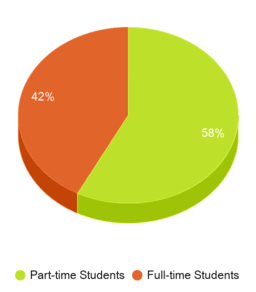
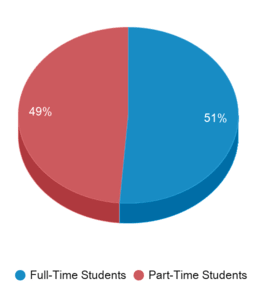
# Enrollment Undergraduate
239 students
261 students
# Full-Time Undergraduate Students
1,016 students
574 students
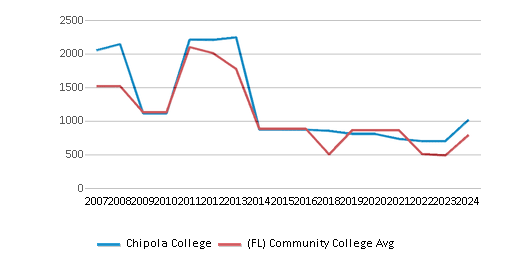
# Full-Time Graduate Students
n/a
85 students
# Part-Time Undergraduate Students
1,381 students
648 students
# Part-Time Graduate Students
n/a
36 students
Total Dormitory Capacity
99 students
174 students
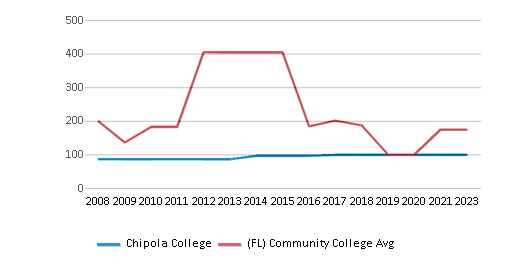
% American Indian/Alaskan
1%
n/a
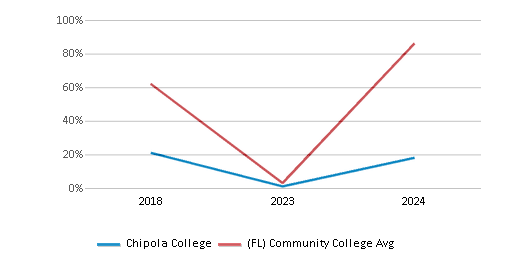
% Asian
1%
5%
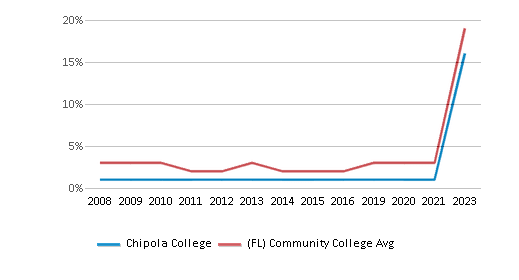
% Hispanic
6%
30%

% Black
15%
19%
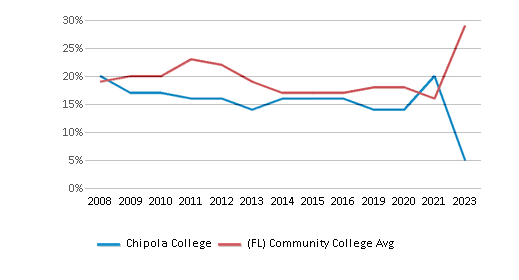
% White
68%
33%
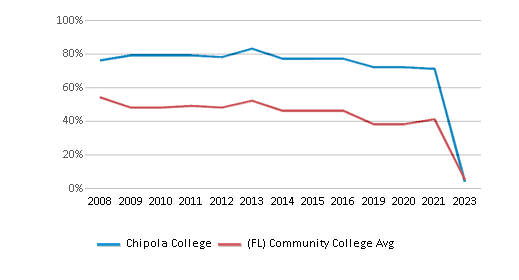
% Hawaiian
n/a
2%
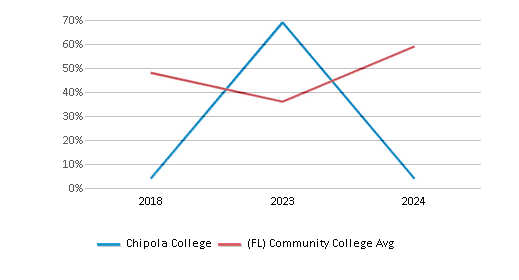
% Two or more races
4%
4%
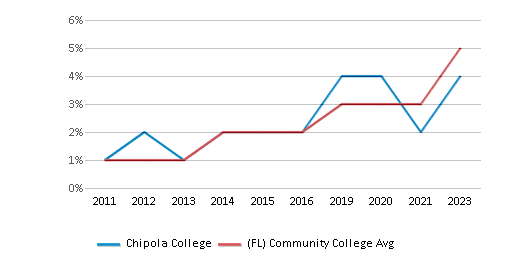
% Non Resident races
1%
2%
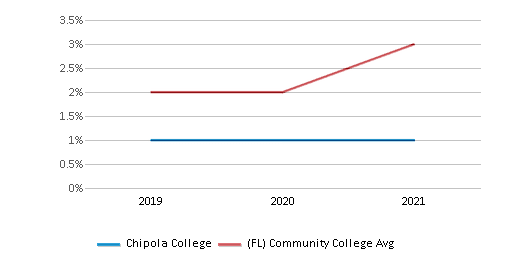
% Unknown races
4%
5%
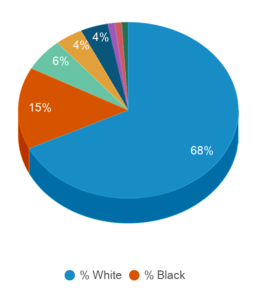
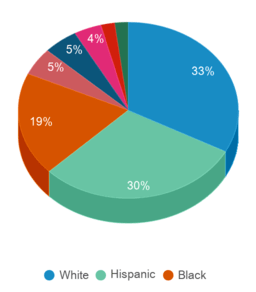
Diversity Score
0.51
0.76
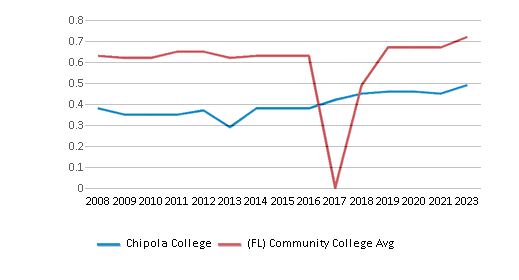
College Completion Rate (Students who graduate in less than 4 years)
n/a
0.6183%
College Completion Rate (Students who graduate in 4 years or more than 4 years)
0.5169%
0.4334%
Average Graduate Earnings (10 Years)
$32,200
$31,500
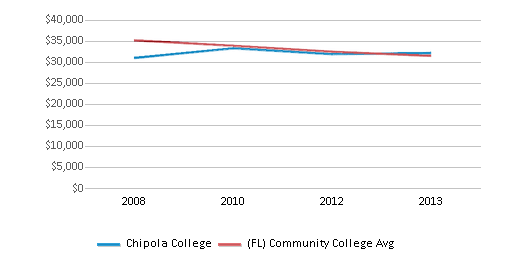
Tuition and Acceptance Rate
The public in-state tuition of $3,120 is less than the state average of $3,280. The in-state tuition has stayed relatively flat over four years.
The public out-state tuition of $8,950 is less than the state average of $10,578. The out-state tuition has stayed relatively flat over four years.
In-State Tuition Fees
$3,120
$3,280
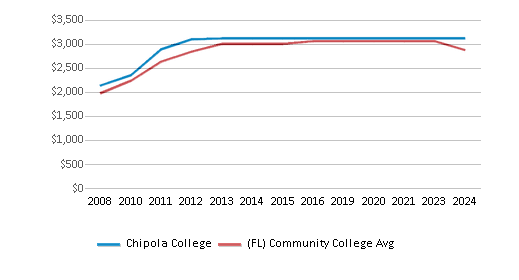
Out-State Tuition Fees
$8,950
$10,578
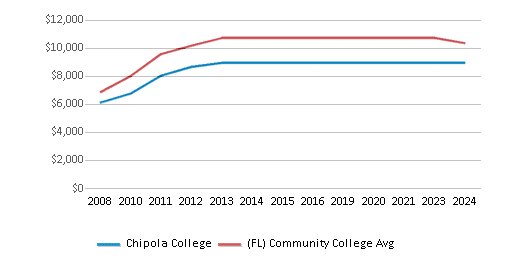
% Students Receiving Some Financial Aid
94%
88%

Median Debt for Graduates
$4,500
$10,250
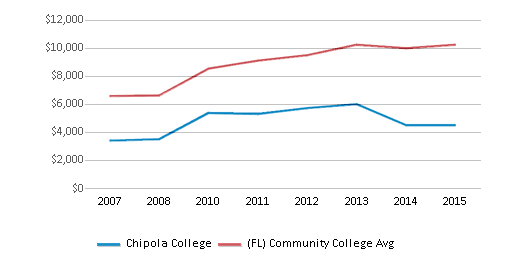
Median Debt for Dropouts
$3,325
$6,250
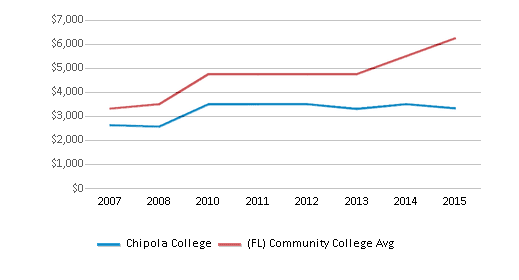
Acceptance Rate
n/a
94%
SAT Reading
n/a
442
SAT Math
n/a
429
ACT Composite
n/a
18
ACT English
n/a
18
ACT Math
n/a
18
Source: 2024 (or latest year available) Integrated Postsecondary Education Data System (IPEDS)
School Notes
- Chipola Junior College was founded in 1947 and operated for one year as a private educational institution. Chipola Junior College entered in a new stage when it officially became Chipola College on August 18, 2003. The name had to be changed because from this time forward Chipola is offering 4 year degrees in Science and Math. The majority of students who attend Chipola College are natives of the five-county district served by the college. Thus, most students are from a rural or small town background. Marianna, with a population of about 10,000, is the largest city in the district. The population of the entire district is less than 94,000. Most regional students commute to the campus. Most out-of-state and foreign students live in Chipola's Residence Hall. Chipola College offers Baccalaureate (four year) degree programs in Secondary or Middle School Education. Chipola College's Math and Science Education degrees prepare students to teach mathematics and/or science in middle and/or high school. Graduates of these programs will be certified to teach either mathematics and/or science in Florida middle or high school. Our Workforce Development programs offer associate degrees and certifications in several fields in addition to offering worker retraining and employee development for area employers.
Frequently Asked Questions
How much does Chipola College cost?
Chipola College's tuition is approximately $3,120 for In-State students and $8,950 for Out-State students.
What is Chipola College's ranking?
Chipola College ranks among the top 20% of community college in Florida for: Least expensive tuition.
Recent Articles

Obtaining Your Bachelor's Degree at a Community College
Explore the evolving landscape of community colleges offering bachelor's degrees, addressing affordability, accessibility, and workforce needs.

A to Z of Community College Certificates and Courses
From business and healthcare to technology and skilled trades, the article showcases the breadth of options available to students seeking to enhance their knowledge, develop new skills, or pursue career advancement.

What is a Community College?
This comprehensive guide explains what a community college is, its history, and its role in higher education. It covers the types of programs offered, differences from four-year colleges, benefits of attending, and important considerations for prospective students, providing valuable insights for those exploring educational options.









